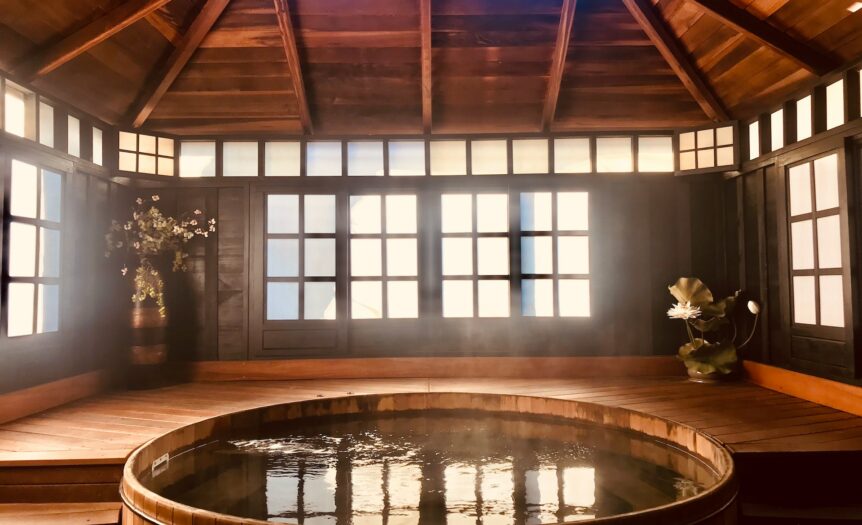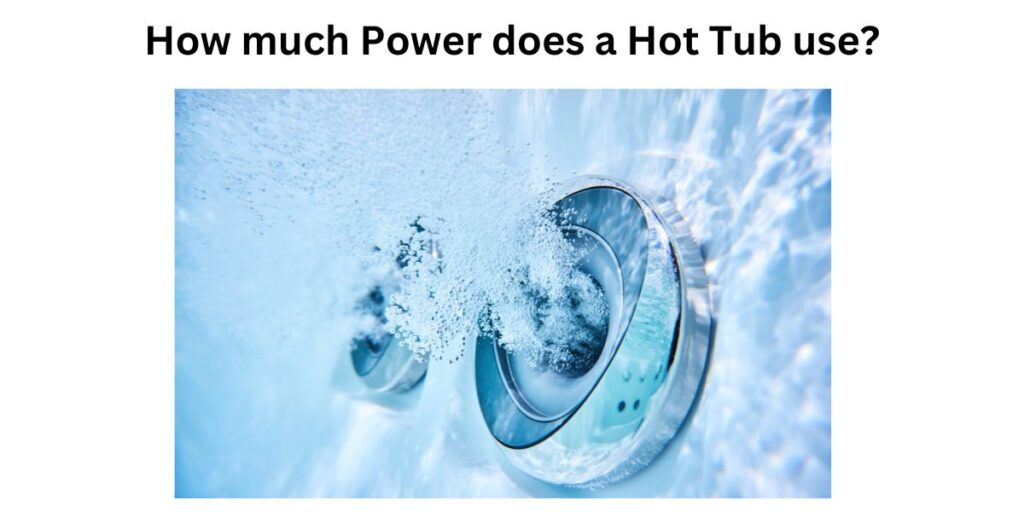Are you considering adding a luxurious hot tub to your home but concerned about the potential impact on your electric bill? You’re not alone! With energy costs continually on the rise, many homeowners are seeking answers to questions like “how much power does a hot tub use?” Read on as we dive into the factors that influence hot tub energy consumption and explore ways you can maximize efficiency while still enjoying the soothing warmth of your personal spa.
Factors Affecting Hot Tub Power Consumption
The size of the hot tub and how often it’s used, as well as the temperature setting, are all key factors that impact how much power a hot tub consumes.
Size Of The Hot Tub
One of the primary factors affecting hot tub power consumption is its size. As you might expect, larger hot tubs typically require more energy to heat and maintain their temperature compared to smaller models.
For example, a compact 2-3 person hot tub may only consume around 3-4 kWh per day, while a spacious 6-8 person model could use up to 7-10 kWh daily. However, it’s important not to overlook other energy-efficient features that can offset this increase in power usage.
Frequency Of Use
The frequency of use is a key factor that affects the power consumption of your hot tub. If you use your hot tub frequently, it will require more energy to keep the water at a consistent temperature.
It’s important to note that even when not in use, your hot tub still consumes electricity to maintain its heat and readiness for use. Therefore, reducing the frequency and duration of use can significantly reduce power consumption and save on monthly electric bills.
Additionally, implementing proactive measures like turning off equipment when the hot tub is not in operation can further reduce energy usage without compromising overall performance.
Temperature Setting
The temperature setting is one of the most significant factors that affect hot tub power consumption. Hot tubs use a heating element to raise water temperatures and maintain them at a specific level.
The higher you set the temperature, the more energy your hot tub will consume.
To reduce electricity consumption costs while still enjoying your spa experience, experts suggest lowering the water temperature when not in use. It can help you save up to 10% on your monthly electric bill by reducing energy waste and improving efficiency over time.
Estimating Hot Tub Electricity Cost
To estimate the electricity cost of your hot tub, you can calculate the kilowatt usage per hour and multiply it by your local utility’s rate for electricity.
Calculation Based On Kilowatt Usage
To estimate the electricity cost of running a hot tub, you need to know how many kilowatts your hot tub uses. One way to calculate this is by checking the manufacturer’s specifications or manual for the wattage of your hot tub heater and pump.
Once you have that information, use an online kilowatt-hour (kWh) calculator to determine how much energy your hot tub consumes per hour based on its wattage.
For example, let’s say your hot tub has a 5 kW heater and a 1 kW pump. If you run it for four hours every day, that means your daily consumption would be around 20 kWh (5 kW + 1 kW = 6 kW x 4 hours = 24 kWh/day).
Multiply this by 30 days in a month and that brings us to about 600 kWh/month consumption rate.
Average Monthly Cost
The average monthly cost to run a hot tub depends on various factors such as its size, usage frequency, temperature setting, and energy efficiency. On average, a small-sized hot tub that is used several times a week with the temperature set between 100-102°F can consume around 400-600 kWh per month.
Based on this consumption rate, the estimated electricity cost can range from $40-$80 per month in most areas of the United States.
To keep your hot tub operating costs under control and save money on your electric bill each month, it’s essential to follow some simple tips such as using a programmable thermostat or timer to reduce heating time when not in use, keeping your hot tub covered when not in use to avoid heat loss and running it at lower temperatures will help keep the bills down while still enjoying relaxed heated water therapy sessions.
Also, check the utility provider with Utility Bidder to seek the best possible pricing.
Tips For Reducing Hot Tub Electricity Consumption
To save on electricity costs, try using a timer or programmable thermostat, keeping the hot tub covered when not in use, improving insulation around the hot tub, and lowering the water temperature when not in use.
Use A Timer Or Programmable Thermostat
One effective way to reduce the energy consumption of your hot tub is to use a timer or programmable thermostat. This device allows you to set when you want the hot tub to turn on and off automatically, so it only runs during the times you plan to use it.
For example, if you typically enjoy soaking in your hot tub after work or before bed, program the heater to start about 30 minutes prior and shut off after an hour or two.
That way, it won’t be continually drawing power throughout the day while not in use.
Keep The Hot Tub Covered When Not In Use
One of the simplest and most effective ways to reduce hot tub electricity consumption is to keep it covered when not in use. This helps retain heat, preventing the water from cooling down too quickly and requiring additional heating.
A well-insulated cover can also minimize evaporation, further reducing energy usage. Additionally, by covering your hot tub, you prevent debris such as leaves or bugs from falling into the water which may clog up filters or require additional cleaning.
Keywords: Hot tub cover, insulation, evaporation prevention, energy usage reduction
Improve Insulation Around The Hot Tub
Improving insulation around the hot tub is a great way to reduce electricity consumption and keep costs down. When purchasing a hot tub, look for models with high-quality insulation that can help retain heat for longer periods of time.
If your hot tub is not already insulated or needs additional insulation, consider using foam panels or spray-on insulation to improve its efficiency. You could also install insulating materials around pipes and pumps to further reduce heat loss.
Lower The Water Temperature When Not In Use
Another way to reduce hot tub energy consumption is by lowering the water temperature when the hot tub is not in use. This can significantly cut down on electricity costs since heating up water takes up a lot of energy.
For example, reducing the water temperature from 104°F to 98°F for eight hours a day can save as much as $10 per month or more depending on your location and usage.
Conclusion
In conclusion, the power consumption of a hot tub depends on various factors such as its size, frequency of use, and temperature setting. Estimating its electricity cost may involve calculation based on kilowatt usage or average monthly cost.
However, to reduce energy consumption and lower electric bills, one can opt for using timers or programmable thermostats, keeping the hot tub covered when not in use, insulating it better and lowering the water temperature when not in use.
Related Posts
Can you put a Hot Tub on a Deck?
How to clean a hot tub cover?
How to clean an inflatable hot tub?
How to remove a hot tub?
How to clean a Hot Tub Filter?







